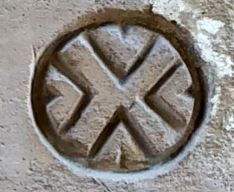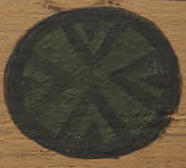| Token | Source | Date |

|

wrš wnjs sḏr=f sḥtp=f nw.ty m wnw
Unas will spend the day and he will spend the night, while he pacifies the two adzes in Hermopolis.
|
Unas
|

|

jw=(j) hꜣ.k(wj) r ꜣbḏ.w ẖr
I descended to Abydos, which was under ...
|
1st Intermediate Period
|

|

ḥqꜣ ṯnj m mr.wt qd.w m mr.wt jr.t ḫt r nfr ḏd m r'=f jr m ḫpš=f
the ruler of Thinis, with a desire to build, with a desire to do good things, who speaks with his mouth and who acts with his strong arm
|
9th/10th Dynasties
|

|

jw pḥ.n šmꜥ.w jqr jwn.t
while the grain of Upper Egypt reached the nome of the crocodile, and Dendera.
|
9th/10th Dynasties
|

|

jsṯ tꜣ pn ẖr s.t ḥr=f ḫnt.t r ꜣbw pḥ.t r tꜣ-wr ṯn(.y)
while this land was under his care, south to Elephantine, north to Thinis of the Thinite nome.
|
Intef II Wahankh
|

|

ḥtp-ḏ-nswt wsjr nb-ḏd.w ḫnt(.j)-jmn.tjw nb-ꜣbḏw m s.wt=f nb(.t) pr.t-ḫrw ḫꜣ t' ḥnq.t ḫꜣ kꜣ ꜣpd ḫꜣ šs mnḫ.t ḫꜣ (j)ḫ.t nb(.t) nfr(.t) wꜥb(.t) n jmꜣḫ.w šms.w Mgg.j ḏd
An offering that the king gives and Osiris, Lord of Busiris, Khentamenti, Lord of Abydos on all his places: an invocation offering of a thousand of bread and beer, a thousand of bulls and fowl, a thousand of alabaster vessels and pieces of linen, a thousand of all good and pure things for the dignified follower Megegi, who says:
|
Intef III Nakhtnebtepnefer
|

|

ḥtp-ḏ-nswt wsjr nb-ḏd.w pr.t-ḫrw t (ḥnq.t) iḥ.w ꜣpd.w n.t jmꜣḫ.w ḫr nṯr-ꜥꜣ nb-p.t jn-jt=f ms.n ṯfj
An offering which the king gives and Osiris, lord of Busiris: an invocation offering of bread (beer), beef and fowl of the honoured dead under the Great god, lord of the sky, Intef, who Tjefi brought forth.
|
Mentuhotep II Nebhepetre (complete reign)
|

|

ḥtp-dj-nswt wsjr nb ḏdw ḫnt(.y) jmn.tyw nb ꜣbḏw
An offering that the king gives of Osiris, lord of Busiris, formost of the westerners, lord of Abydos,
|
Amenemhat I Sehetepibre
|

|

ḏd-mdw jn mnṯw nb wꜣs.t n nṯr.w nb(.w)
Recitation by Montou, lord of Thebes, to all the gods.
|
Senwosret I Kheperkare
|

|

jqr ḥw.t-ḥr jwn.t nb.t jq
The nome of the Crocodile. Hathor of Dendera, the lady of the nome of the crocodile.
|
Senwosret I Kheperkare
|

|

bḥd.t(y) nṯr ꜥꜣ sꜣb šw.t pr m ꜣḫ.t nb p.t nb msn ḫnt(.y) jtr.t šmꜥ.t
He of Behedet, the great god, the many-coloured of plumage, who goes forth in the horizon, the lord of the sky, the lord of Mesen, formost of the shrine row of Upper Egypt.
|
Senwosret I Kheperkare
|

|

nṯr ꜥꜣ nb ꜣbḏw
the great god, lord of Abydos.
|
Senwosret II Khakheperre
|

|

ḥtr=k r grg km.t
you are appointed to maintain Egypt to in good order
|
Sety I Menmaatre
|

|

sbk-rꜥ nb smnw ḥr(y)-jb tꜣ-(j)m(.y)-jtr.w
Sobek-Re, lord of Sumenu, who resides in Imiotru
|
Merenptah Baenre
|

|

ḏd=f jyj pw jr.n wr ꜥꜣ n nb n ḫꜣs.t nb(.t) kmbjṯt r km.t
He says: the king of the lord of every foreign land, Cambyses, came to Egypt
|
Cambyses Mestiure
|

|

mr tꜣ.wy mk km.t
He who loves the two lands, who protects Egypt.
|
Nectanebis (I) Kheperkare
|

|

jmj-r wꜥb sḫm.t mnṯw nb jwnw šmꜥ.w
the overseer of the priest of Sekhmet and of Montu, the lord of Upper Egyptian Iunu (i.e. Hermonthis)
|
Nectanebo (II) Snedjemibre-Setepeniniheret
|

|

jm.y-r n pr-ꜥꜣ n p(ꜣ) dmy n ṯꜣm.t ḥr-ḏḥwty mꜣꜥ-ḫrw
the overseer of the farao for the village of Medinet-Habu, Hor-Djehuty, true of voice.
|
Graeco-Roman Period
|

|

ḏd-mdw (j)n ḥr bḥd.t nṯr ꜥꜣ nb p.t ꜥpy wr
Recitation by Horus of Edfu, the great god, the lord of the sky, the great winged scarab
|
Ptolemy IV Philopator
|

|

ḥr bḥd.t nṯr ꜥꜣ nb p.t sꜣb šw.t pr m ꜣḫ.t
Horus of Edfu, the great god, the lord of the sky, the multi-coloured of feathers who goes forth from the horizon.
|
Ptolemy V Epiphanes
|

|

r ḏsr s.t wr.t r ꜣḫ.t n.t p.t ꜥpy wr m-ḫnt=s
in order to raise up the great place to the horizon of the sky, the great winged scarab is in front of it
|
Ptolemy VI Philometor
|

|

ḥr bḥḏ.t ꜥpy šps sḫḫ tꜣ m šw.t=f
Horus of Edfu, the noble winged sun in scarab form, who hastens the land with his shadow
|
Ptolemy VI Philometor
|

|

sbk-rꜥ nb nb(.yt) wp.y ḫ.(w)t nb.w(t)
Sobek-Re, lord of Kom Ombo, who judges everything.
|
Ptolemy VII Neos Philopator
|

|

ḏd-mdw (j)n ḥr bḥd.t nṯr-ꜥꜣ nb p.t ḫprr šps
Recitation by Horus of Edfu, the great god, the lord of the sky, the noble scarab,
|
Ptolemy XI Alexander II
|

|

ḥr bḥd.t nṯr ꜥꜣ nb p.t [..] sꜣ rꜥ ḫy pr jm=f
Horus of Edfu, the great god, the lord of the sky, [..] the son of Re, who rose and went forth from him.
|
Ptolemy XI Alexander II
|

|

sbk-rꜥ nb nb.yt nṯr ꜥꜣ nb tꜣ-sty
Sobek-Re, lord of Kom Ombo, the great god, lord of the first upper Egyptian nome.
|
Ptolemy XIII
|

|

n(y)-sw.t šmꜥ bj.ty mḥw
the king of upper Egypt, the king of lower Egypt
|
Ptolemy XIII
|

|

ḏd-mdw (j)n ꜣs.t ḥḏḏ.t n(.t) bḥd.t mw.t-nṯr n bjk nbw.t
Recitation by Isis, the scorpion of Edfu, the mother of the god for the falcon, the golden one
|
Ptolemy XIII
|

|

ḏd mdw jn rnn.wtt srq.t ḫsf ḏdf.wt ḥm.t nmt.t sn r [pr]-šps.t
Recitiation by Renenoutet-Serket, who opposes the snakes, who repels and strides through them to the house of the noble one.
|
Ptolemy XIII
|

|

bꜣ.w ꜥnḫ.w m tꜣ n jtm.w
The living Ba's in the land of Atoum
|
Ptolemy XIII
|

|

ṯḥḥ.wt ḫpr.tj m ḫt-mn
The exultation comes to be in Egypt
|
Cleopatra VII Philopator
|

|

ḥr-smꜣ-tꜣ.wy nb ḫꜣ-dj nṯr ꜥꜣ ḥr(.y)-jb jwn.t rꜥ pw ḫpr ḏs=f m sp tp(.y)
Harsomtus, lord of +txA-di+l, great god, who resides in Dendera, it is Re who came to be by himself the first time
|
Cleopatra VII Philopator
|

|

n(.t) tꜣ šmꜥ bj.tyt n(.t) tꜣ mḥw
(the queen) of the land of upper Egypt, the queen of the land of lower Egypt
|
Cleopatra VII Philopator
|

|

nb [..] nṯr ꜥꜣ m tꜣ-rr ꜥꜣ pḥ.ty
Lord of [...], great god in Dendera, great of strenght
|
Cleopatra VII Philopator
|

|

s.t pr ḥw.t-ḥr ẖr mnw
The place where Hathor goes forth under Menou.
|
Cleopatra VII Philopator
|

|

s.t tꜣ mw.t mšꜥ.w ꜥšꜣ.w m smꜣ.yw stš jm=f
The place of the death of the numerous soldiers among the followers of Seth
|
Cleopatra VII Philopator
|

|

twt sꜣ wr prj m qꜣy.t nḥb-kꜣw grg tꜣ pn
You are the eldest son, who went forth from the high field, Nehebkau who established this land.
|
Cleopatra VII Philopator
|

|

ḏd-mdw (j)n ḥr nb mdny.t jwꜥ n wn-nfr-mꜣꜥ-ḫrw sms.w nfr ḥr s.t jt=f
Recitation by Horus, lord of Medenit, heir of Wennofer, justified, the beautiful elder upon the throne of his father
|
Cleopatra VII Philopator
|

|

wꜥ.t m tꜣ-rr srq.t wr.t
The sole one in Dendera, the great scorpion
|
Cleopatra VII Philopator
|

|

bꜣ šps n wsjr ḫnt.(y) jmn.t(y)t nṯr ꜥꜣ nb ꜣbḏ.w wsjr jwn wr m jwn.t bꜣ šps jyj=f m ꜣḫ šps r ẖnm ḫpr.w=f m ḥw.t-nṯr=f
The noble ba of Osiris, formost of the west, great god, lord of Abidos, Osiris the pillar, great one in Dendera, the noble ba, he comes as the noble spirit in order to unite with his shapes in his temple.
|
Cleopatra VII Philopator
|

|

n srq(.t) ḥr(y)-jb bḥd.t
for the scorpion, residing in Edfu
|
Cleopatra VII Philopator
|

|

prj m wꜣs.t
who goes forth from Thebes
|
Augustus
|

|

ḏd jn wsjr ḫnt.y jmn.tyw nb ꜣbḏw sꜣ n wr tp n gbb wpj ḫ.wt nfr ḥr dj ꜥnḫ ḏd wꜣs nb snb nb ꜣw-jb nb n djw-ḥr nḥḥ ḏ.t jry
Spoken by Osiris, the formost of the westerners, the lord of Abidos, the firstborn son of Geb, who judges the cases, beautiful of face, who gives all life, stability and dominion, all health and all joy to Teüris, all eternity and forever.
|
Trajan
|